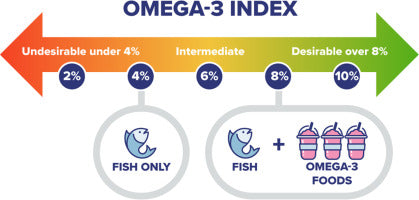Understanding Hypertension and Dietary Strategies
The Role of Diet in Hypertension Management
Diet plays a key part in managing high blood pressure, or 'hypertension'. Choosing the right foods can help control blood pressure levels. This is vital to prevent health problems linked to hypertension. Eating less salt is one step, but it's more than just cutting out the salt shaker. It's about picking foods that are naturally good for your blood pressure. These include fruits, veggies, whole grains, and lean proteins. A special diet called the DASH diet is one good guide. It stands for 'Dietary Approaches to Stop Hypertension'. Following it can lower blood pressure in just a few weeks. This is important because high blood pressure can damage your heart, kidneys, and other parts of your body. By eating blood pressure-friendly foods, you can keep your heart healthy and lower your risk of stroke and heart disease.

Key Nutrients to Look for in a Hypertension Diet
A hypertension diet should include key nutrients that help manage blood pressure. Look for foods high in potassium, magnesium, and fiber. These nutrients aid in relaxing blood vessels and improving blood flow. A diet rich in calcium and omega-3 fatty acids is also beneficial. These help to reduce artery inflammation and enhance heart health. When shopping, choose fresh and whole foods over processed items. Limit intake of sodium, as it raises blood pressure in sensitive individuals.
Top Blood Pressure-Lowering Foods
The Benefits of Fresh Garlic and Tomatoes
Fresh garlic and tomatoes offer a powerful duo in the fight against hypertension. Garlic is known for its allicin content, which helps to relax blood vessels, thus lowering blood pressure. It also aids in overall cardiovascular health by reducing arterial stiffness. Including a clove or two of garlic in daily meals can have significant health benefits. Tomatoes, on the other hand, are rich in lycopene, an antioxidant that has been linked to reductions in blood pressure. They also contain potassium, which assists in balancing the adverse effects of sodium and helps to maintain proper heart function. To harness the benefits of these natural blood pressure-lowering foods, here are some suggestions:
- Add crushed garlic to sauces, soups, and dressings.
- Snack on cherry tomatoes or include sliced tomatoes in salads.
- Blend fresh tomatoes into a heart-healthy gazpacho or tomato juice.
With these simple dietary additions, you can take a delicious step towards managing your hypertension.
The Role of Potassium-Rich Foods in Hypertension Control
Potassium is a key mineral in managing hypertension. It helps to balance sodium levels and ease tension in blood vessel walls, lowering blood pressure. A diet rich in potassium may include:
- Bananas, which are widely known as a great source of potassium.
- Sweet potatoes, offering a nutritious boost with both potassium and fiber.
- Spinach, which is not only rich in potassium but also magnesium and iron.
- Avocados, brimming with heart-healthy fats and potassium.
- Beans and lentils, providing a fill-the-plate option that delivers potassium, protein, and fiber.
Incorporating these foods into your diet can make a significant difference in blood pressure control and overall heart health.
Integrating Blood Pressure-Friendly Foods into Daily Life
Tips for Preparing Hypertension-Conscious Meals
Creating meals that support healthy blood pressure is key. Here are simple tips:
- Start with whole foods. Choose unprocessed ingredients.
- Use less salt. Season with herbs and spices instead.
- Cook with healthy fats like olive oil or avocado oil.
- Include a good mix of potassium-rich foods like sweet potatoes and bananas.
- Add leafy greens such as spinach or kale to your dishes.
- Prepare lean proteins like fish or skinless chicken.
- Opt for high-fiber options like brown rice or quinoa.
- Stay hydrated with water and limit high-sugar drinks.
Following these simple steps can make a big impact on managing hypertension.
Strategies for Eating Out with Hypertension
Eating out with hypertension doesn't have to be stressful. Here are strategies to help. Choose restaurants with low-sodium options or that allow special requests. Preview menus online to plan ahead. When ordering, ask for dressings and sauces on the side. Opt for steamed, grilled, or baked dishes rather than fried. Avoid all-you-can-eat buffets that may lead to overeating. Keep portion control in mind, even if it means taking leftovers home. Stay hydrated with water, limiting alcoholic and caffeinated beverages. By following these tips, you can enjoy dining out without compromising your blood pressure.
Monitoring Blood Pressure and Dietary Adherence for Optimal Results
To ensure the benefits of a hypertension diet, it's crucial to monitor blood pressure and dietary adherence. Regularly taking your blood pressure readings helps track progress and adjusts your diet as needed. Keeping a food diary can also assist in maintaining a consistent intake of blood pressure-friendly foods, making it easier to spot and change unhealthy patterns. Achieving optimal results might involve collaborating with a healthcare provider to set realistic goals and evaluate the efficacy of your dietary choices.




